52 Countries in 52 Weeks, Chapter 13: The Nordics
In Which I Go Past The Arctic Circle, Across The Great Scandinavian Capitals, And Learn What Happens When The Sun Doesn’t Set
I had never given much thought to what 24 hours of daylight actually looked like.
Oh, I knew it happened; that there was three weeks or so from the end of June to the middle of July where the sun never set above the Arctic Circle.
And I knew that I wanted to see it, wanted to feel the rays at three in the morning, wanted to laugh at the fact that such a phenomenon existed, wanted to feel that sense of primitive adventure that lives in every 8-year-old, to point to the farthest reaches of an atlas and say “I want to go to there.”
In other words, there was no question that during this trip I was travelling to the far north.
The only question was where.
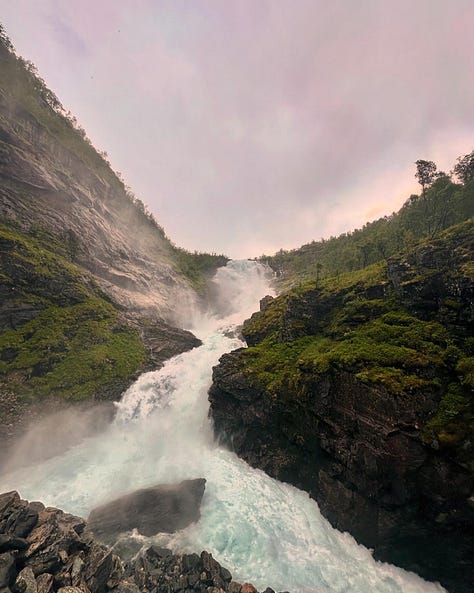
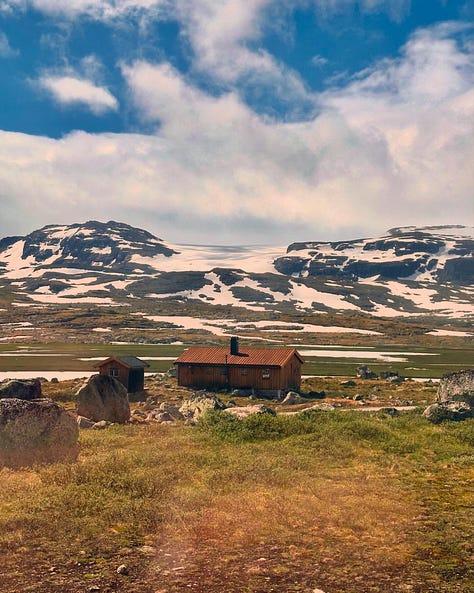
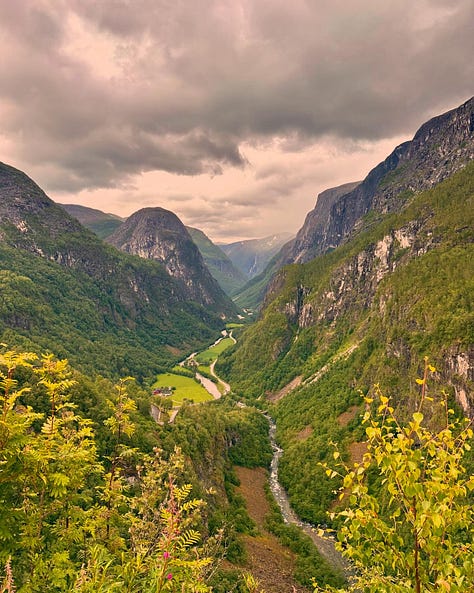
For the most part, I planned out this trip at a pace that, while demanding, didn’t seem like some sort of masochistic challenge for its own sake.
Then I hit Scandinavia.
(Or more accurately, the Nordic countries, because Finland is part of the latter but not the former, a weird and somewhat annoying taxonomical overlap.)
I wanted to head north, see the fjords and experience the endless sunlight. But as a giant city geek, I wanted to explore the capital cities, which are regularly ranked among the top in the world for livability and citizen satisfaction, and see what makes them tick.
My original draft itinerary for the region was three weeks, but when I compared it to the rest of what I wanted to do Europe (and critically, the 90-day limit of visiting EU countries in a six-month period), it was too much time.
I could have taken flights to shorten the commutes, but then I would have missed out on what were seriously recommended train journeys.
(Plus, planes suck)
I also could have decided to only to visit only two or three of Copenhagen, Oslo, Stockholm or Helsinki…but that would have been different from other places I cut from the journey, places that were quite far away from the main geographical zones I was travelling to.
Finally, as ridiculous as it sounds, I knew that if I hadn’t been to any of those capitals, I’d be thinking about it months later, wondering if I had really missed out, lamenting that I wouldn’t be able to make as good as internal comparisons in the future.
The brain is a silly thing that way.
So after much researching ferries and special train tickets and potential adventures up north, I came up with the plan. After going from Germany to Copenhagen, and spending three nights in my first Nordic city, I would spend the next 12 days constantly on the move, never staying in any place more than a night: a train and overnight ferry ride to Oslo, a day-long series of trains and buses and boats Bergen, a night train back to Oslo, the big train and ferry trip up north (spending three nights in three different places), another overnight train trip south to Stockholm, a ferry to Helsinki, and a final daytime ferry to Estonia.
And, I promise you, it worked out pretty well!
Some of this was due to, once again, the amazing transportation system on this continent: trains and boats and buses connect virtually every community, even in the most remote areas.
From my final destination in the north, it took literally two buses and one train to travel 1,000 kilometres back to Stockholm, all publicly subsidized.
Admittedly, the price is more than what we might consider “affordable” in Canada: the buses cost $35, and my foot passenger ferries to get to a remote archipelagos were about $75 as a foot passenger.
At the same time, they — unlike the hypothetical regional transportation systems talked about in Canada — actually exist.
The other reason the plan worked is that, in spite of the pace, there was plenty of down time. Yes, when I was in the cities I was doing plenty of activities, but when you’re on a train or ferry, you can’t really do much except relax.
In addition, because it’s not a plane, you’re not spending an hour on either side getting to the airport, plus another two hours beforehand going through the check-in process: you just show up in the middle of the city 10 to 30 minutes before you’re scheduled to leave, and wait for them to scan your ticket. So while the 36 hours per city pace seemed fast (and it was), it didn’t feel particularly rushed
The only way my plan failed?
Laundry. Interestingly, finding a central place to put my stuff in a washer and drier for a few hours has been among the most difficult parts of this trip, particularly in more well-off countries, and by Stockholm I was forced to get extra socks and underwear at the duty-free shop.
Which, you know, wasn’t ideal.
But if the biggest regret is having too much underwear in my suitcase and some wounded planning pride, that’s a solid win.
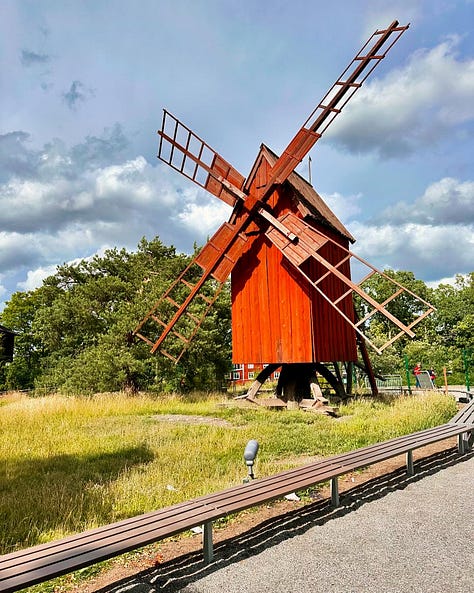
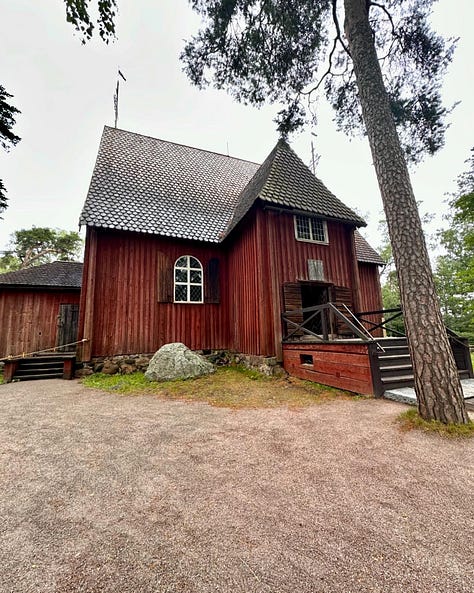
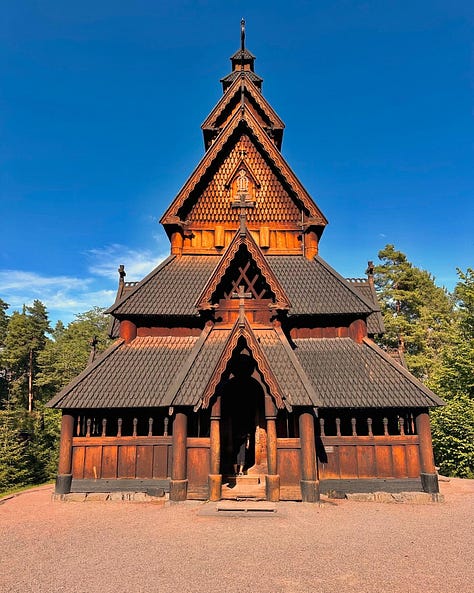
I picked Copenhagen to be the first of the Nordic capitals to visit, and for it to be the longest amount of time (four days, whereas every other city got just a day or two), and that was for the best, because Copenhagen was amazing.
(Quick ranking of the other Nordic Capitals!
#1. Stockholm: A tremendous mix of walkable neighbourhoods, expansive transit system, cosmopolitan restaurants, great museums, and a compact but architecturally stunning old town on the island right next to Downtown.
#2. Oslo: Really great new library, art gallery and museum right on the waterfront, tons of saunas, and a lively energy. Plus, they have a museum that holds the first boat that successfully traversed the Northwest Passage, if you want to complete that Canadian checkmark.
#3: Helsinki: There’s nothing wrong with Helsinki — really lovely neighbourhoods, interesting architecture, a chill vibe that seems ideal if you’re living there. But it’s a little further to get to, with a little less to offer for visitors, than the other three)
Anyway, Copenhagen! The Danish capital isn’t really talked about as one of those top-tier, A+ global cities, because, well, it’s Denmark. There’s no unending beaches or massive cultural prestige. Berlin is a country away. So it sort of gets lost in the shuffle.
In the world of city planning though, Copenhagen is a jewel.
It’s been ranked the second most livable city in the world by the Economist for three years in a row, with the San Francisco Bay Area Planning and Urban Research Association writing that “Copenhagen has become a city synonymous with urbanist ideals, renowned for walkable, people-scaled neighborhoods, well-connected transit systems and pioneering environmental urban design.”
Those aren’t the type of things that pop off the page on an Instagram post, but they are things one quickly notices when you’re there.
That made my four days in Copenhagen lovely. Because of the endless array of bikes, buses, scooters and subways, it was easier to get around than almost anywhere I’ve been, and encouraged exploration.
The canals were visually stunning, but were also utilized in all sorts of ways, from outdoor food courts concrete beaches to housing with built-in kayak parking spaces. The museums and galleries and palaces were spread out in a way that didn’t create a tourist glut in any one area, but instead created a consistent mix of locals and tourists from neighbourhood to neighbourhood.
And then there was the European social libertarianism that I had gotten used to, with open beer gardens, pool areas without lifeguards, everyone on their bikes without helmets, all things that wouldn’t be allowed back home, but were everywhere in Copenhagen.
Overall, the result was an intoxicating street energy, even in the middle of the week, at a surprisingly high level for a metro area of just over two million people.
That is creating more and more demand, and the locals I talked to brought up the boom in housing prices, but let’s do a quick Vancouver comparison: social housing makes up 20% of their residential units, compared to around 9% in Vancouver, and the average price for all properties has hovered around $900,000 Canadian for several years, significantly behind Vancouver’s $1.3 million benchmark selling price.
In my day job, I try and remind folks that everything is relative when it comes to local anxieties. But on a cursory glance, Copenhagen is doing about as much well as any city I’ve come across so far.

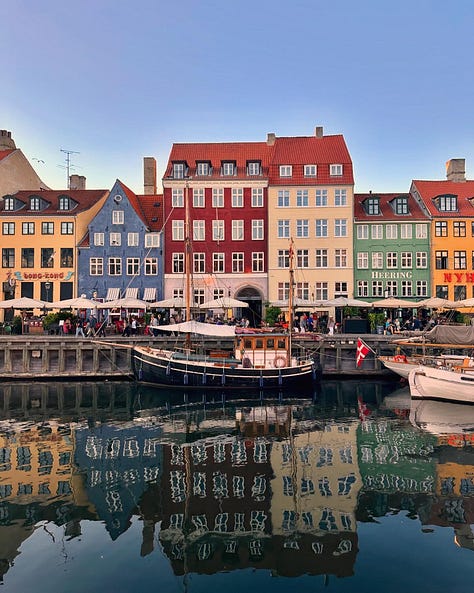
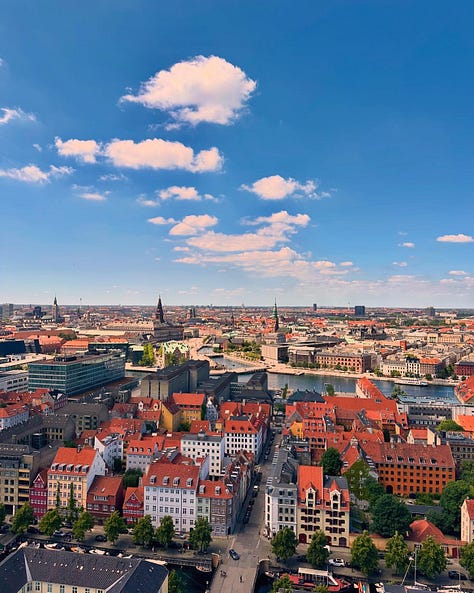
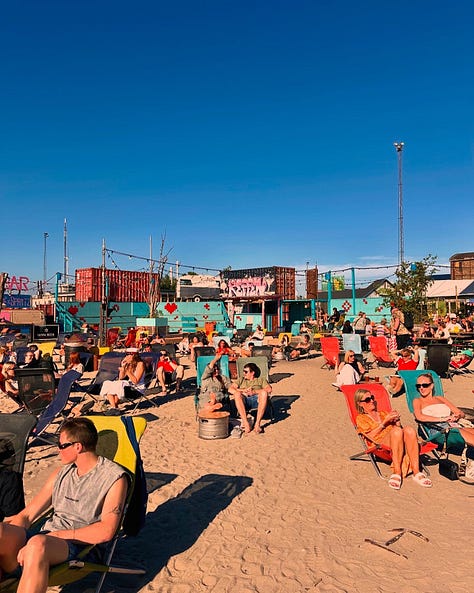
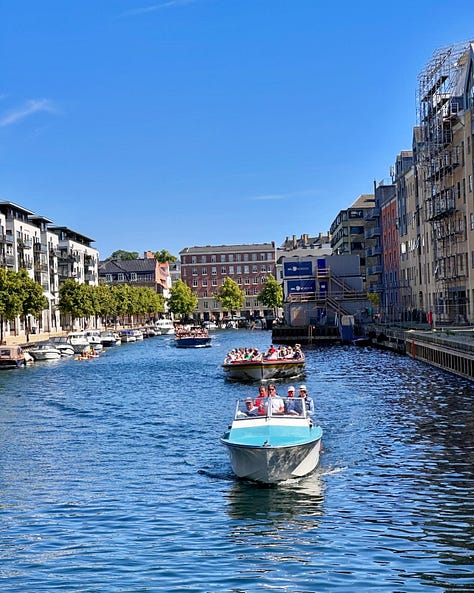
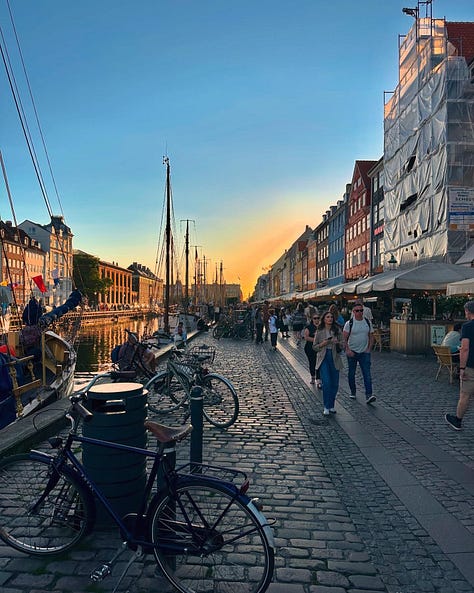
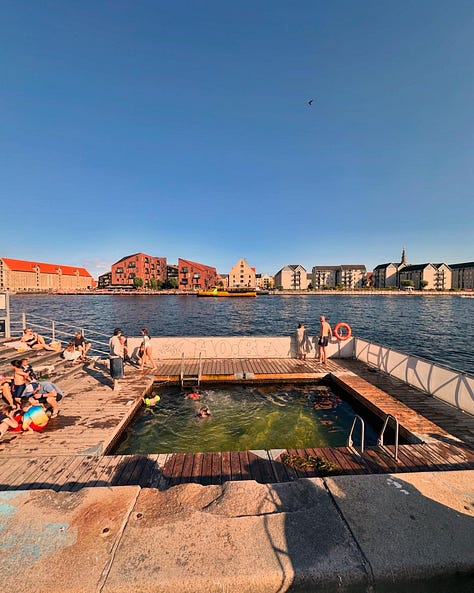
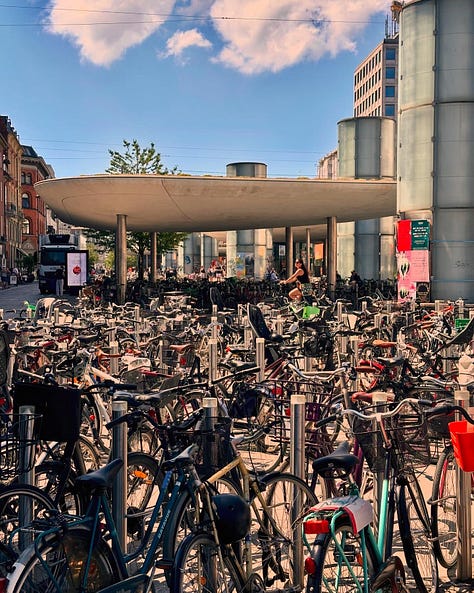
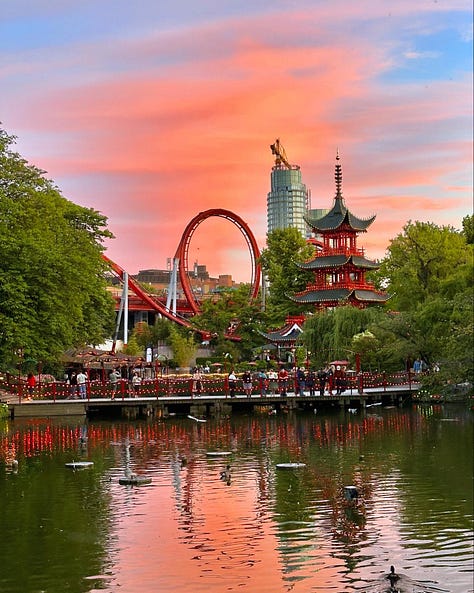
The highlight of the Nordic trip though was never going to be the cities, but the geography.
Waterfalls, glaciers, fjords, lakes: a constantly changing visual feast, as the trains and boats I was on cut against the jagged landscape day after day.
After that was Lofoten, a series of interlocking islands that is about as far north as the middle of Baffin Island. But because of the way the Atlantic currents work, it has a temperate climate that hovers around freezing even in the depths of winter, allowing for plenty of lush forests despite the latitude.
It was a remarkable environment, reminding me of Haida Gwaii but with steeper mountains.
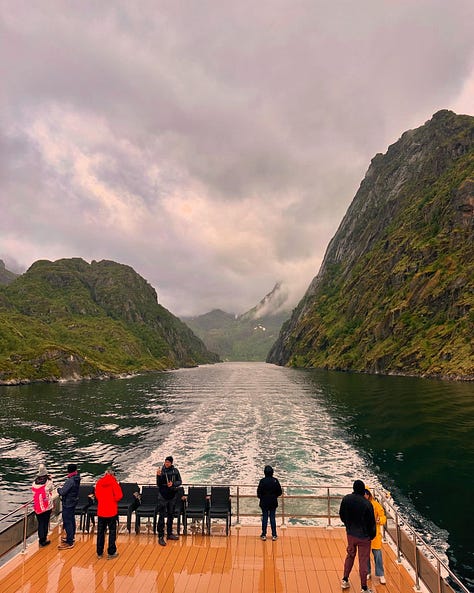
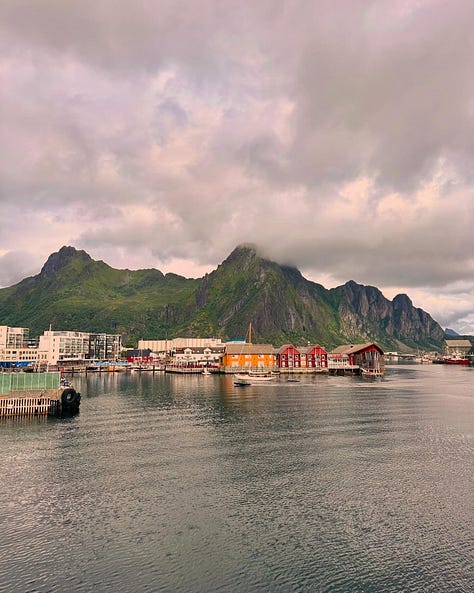
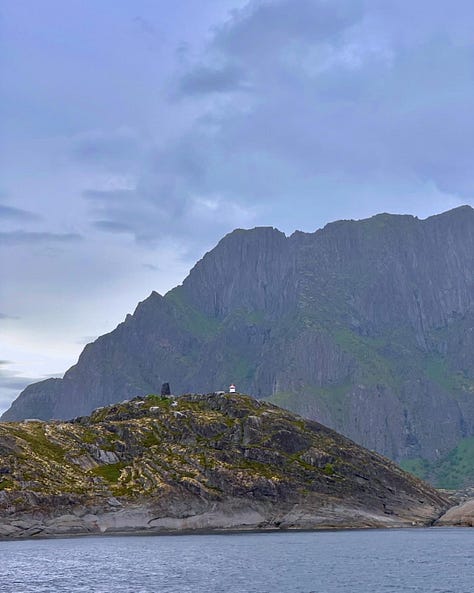
And then there was the final destination: a golf course.
(Please don’t laugh)
Lofoten Links is on the northern tip of one of those islands in the archipelago, surrounded by the Arctic Circle on one side and a solitary mountain on the other.
The combination of phenomenal visuals and interesting routing has led to quick acclaim in the golf world, with the course getting a coveted spot in the Top 100 rankings in Golf Digest last year.
I didn’t know any of that when I googled, on a whim, “arctic golf course Norway Sweden”, but after discovering it, I knew pretty quickly what the final point on my northern route was going to be — especially since it was just a 10-minute taxi from the archipelago’s milk run bus route.
I could write an entire thing on the golfing experience, but I know that’s not my audience, so I won’t go on about how the peat works as rough or being able to keep sight of the ball in twilight.
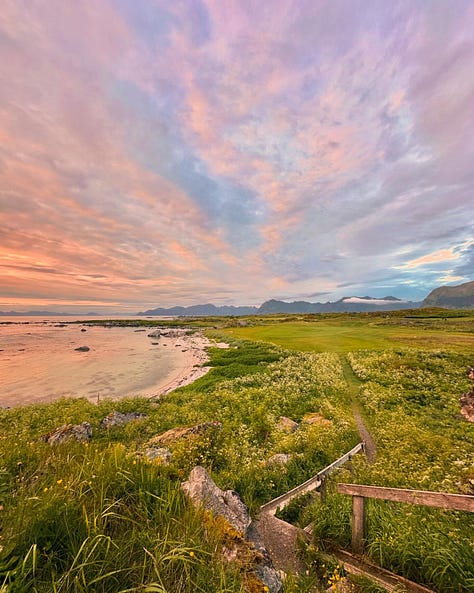
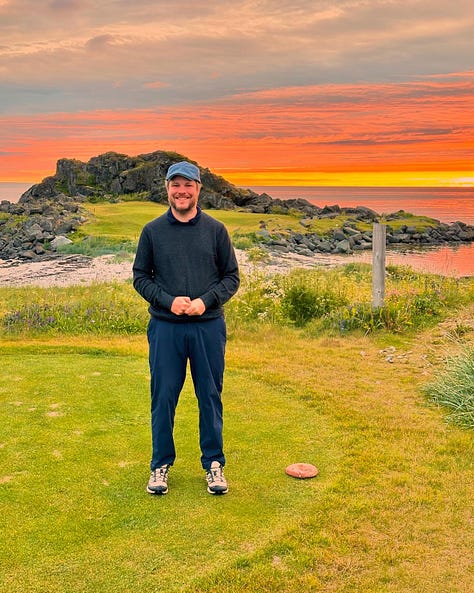
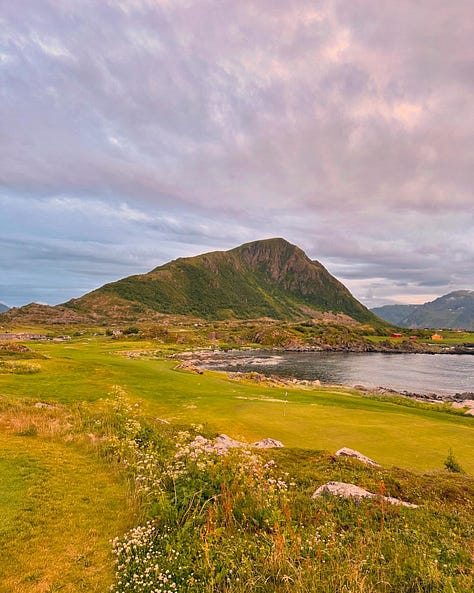
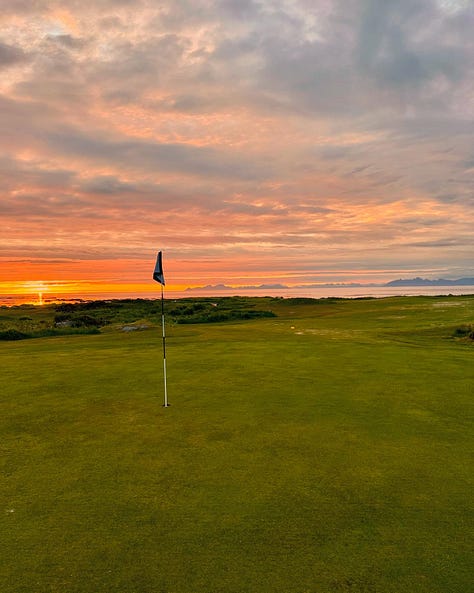
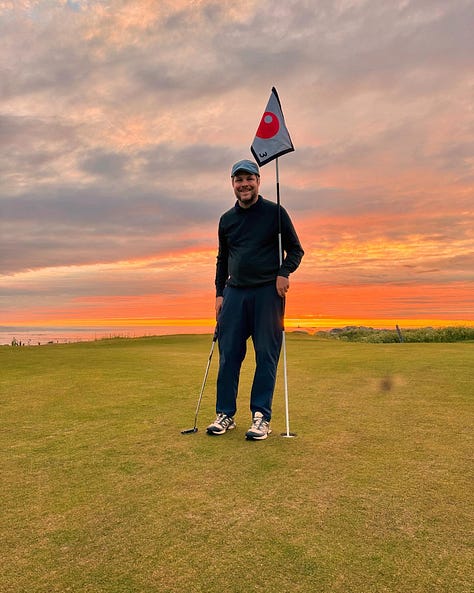
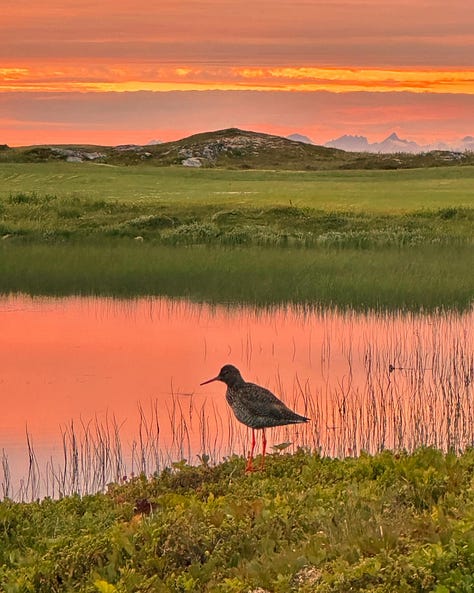
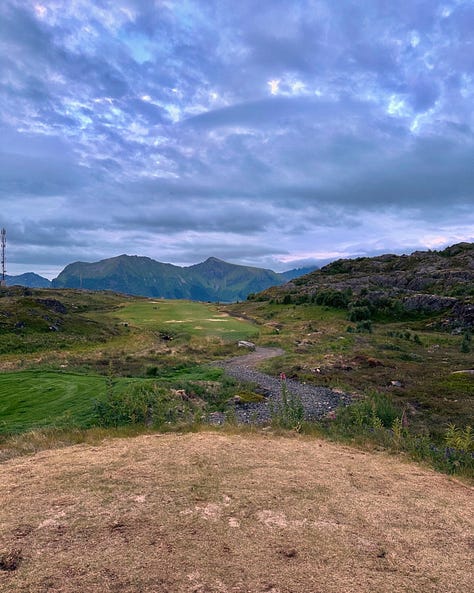
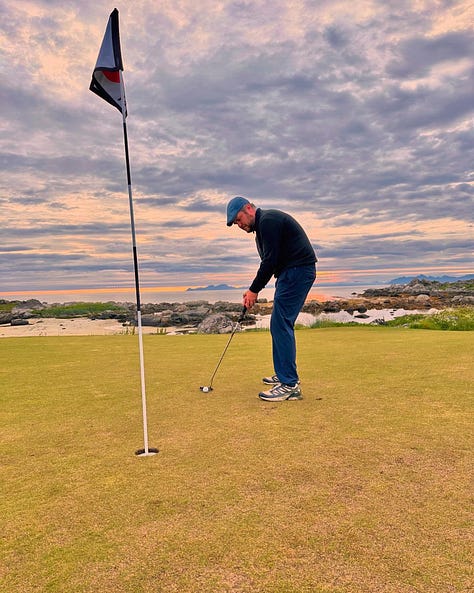
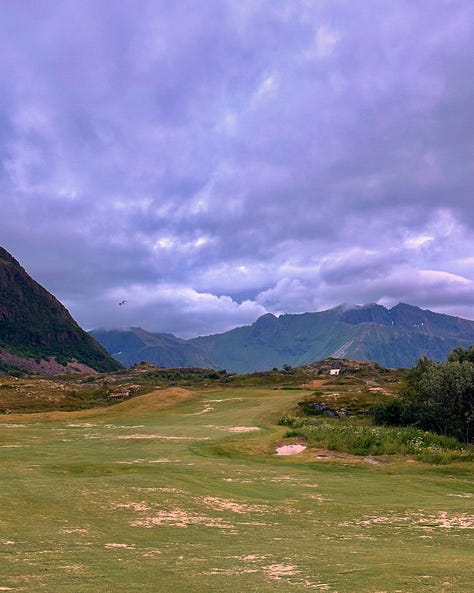
But I’ll try and describe the perfection of the evening in a universal way.
The start time was 11:45pm. For five hours, I had endless square kilometres of the most stunning land and water possible to wander about, without another person in sight
(Turns out most golfers are more interested in a good night’s sleep than an amusing conceit for a story)
It was just me, a ball and some sticks, trying 18 times to figure out a path forward in paradise.
Anyway, here’s what 24 hours of daylight looks like: you know how normally, the sun sets in the west and rises in the east?
When it can’t set, it just sort of stays parallel to the horizon for hours. Hour by hour, it slowly moves from one side of the sky to the other, a rotating kaleidoscope of oranges and pinks and yellows that never stops calling on you to admire it.
There is immense privilege in getting to do something like this, and I imagine the lack of night — and then in winter, the lack of sun — gets tiring for people, in the same way that weeks of seven degrees and rain can feel exhausting in Vancouver.
But when you get to experience it for one night, on one island, with nobody else around?
All places on this trip are sad to say goodbye to.
No goodbye was harder than Lofoten.





Justin, please tell me you are going to put all of this in a book someday soon. I'm following along as you go, and your writing is so engaging I can't wait for your next advenure. I lived in Vancouver for most of my life so the comments and comparisons are really interesting. Thank you for sharing.
Love Norway so much....Lofoten Islands now definitely on the bucket list....what an experience...alone on a northern golf course at 3 a.m...great "blog", Justin....! Happy trails, man...